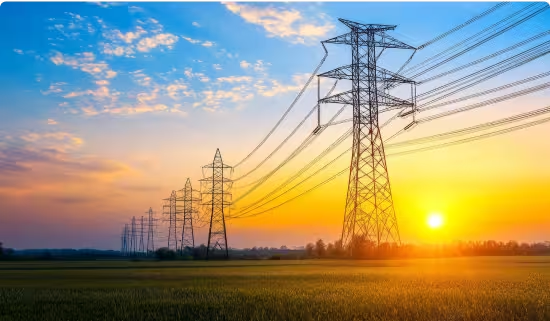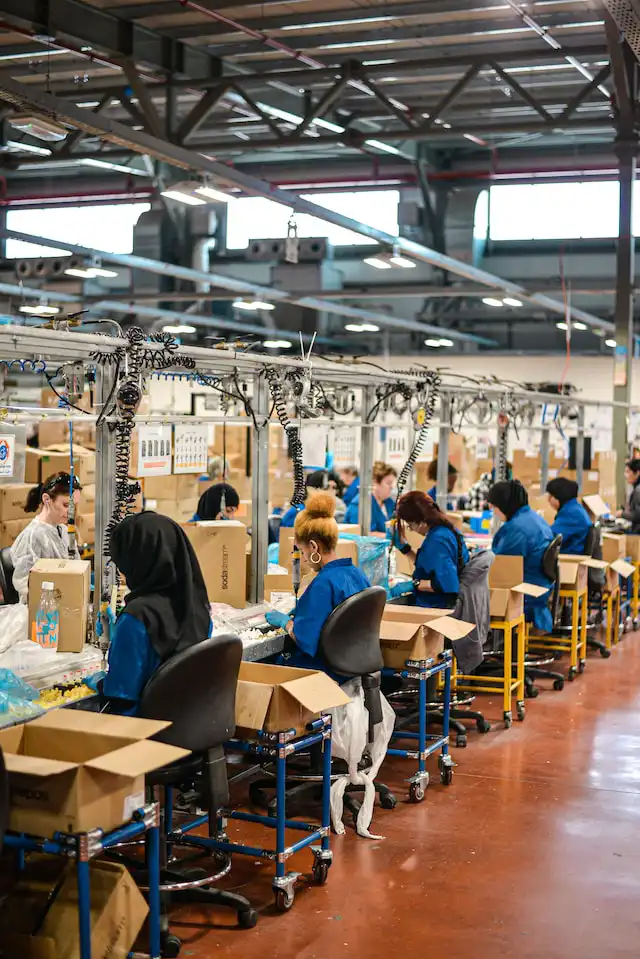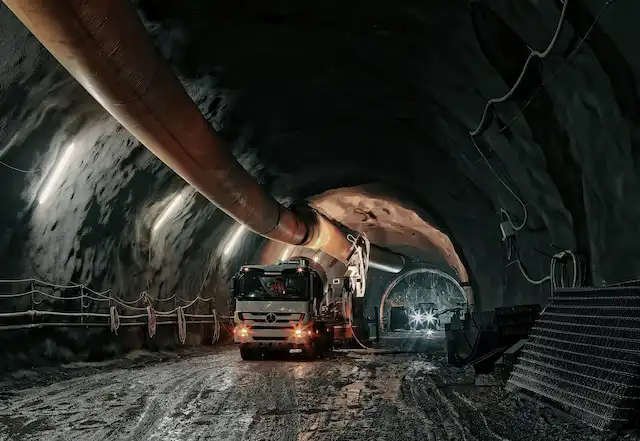
India Reactive Power Compensation Market Outlook to 2020
Rising Industrial Output and Renewable Energy Integration to Foster Growth
Region:Asia
Product Code:KR337
September 2015
96
About the Report
The report titled 'India Reactive Power Compensation Market Outlook to 2020 - Rising Industrial Output and Renewable Energy Integration to Foster Growth' provides a comprehensive analysis of the various aspects such as market size of the India reactive power compensation, organized and unorganized market, reactive power compensation market for the renewable energy, market for different type of reactive power compensation equipments and others. The report also covers the market shares and revenues of major manufacturers in India and international players in the reactive power compensation equipments market.
The reactive power compensation industry in India which is driven by increased industrialization and need for voltage control in the transmission and distribution network, registered revenues of INR ~ crore in FY’2015. The market witnessed a year on year hike in the demand of reactive power compensation. The government rules and regulations for the management of the reactive power form the grid play an important role in the reactive power compensation. The industry witnesses a CAGR of more than ~ % during FY’2010-FY’2015. The market valued at INR ~ crore in the FY’2015 and witnessed a growth of over ~% as compared to the previous year. The increased awareness for the compensation of the reactive power to maintain the grid discipline and to keep the levels of voltage under control to avoid disturbances in the operations of the grid led to increased growth of the reactive power compensation market.
The organized market largely consisted of consumers such as the railways, State Electricity Boards (SEBs), NTPC and other related power sector units and plants, as well as LS manufacturers such as TATA and other core sector industries. The unorganized sector consisted mainly of medium scale and small scale private consumers. In FY’2015, organized segment accounted for ~% of the overall demand. The new demand of the equipments accounted to ~% of the total demand of the reactive power compensation equipments such as the shunt capacitors, reactors, Static VARs, FACTS and others. The upgradation demand in the network was approximately ~ MVAR as compared to the new demand which was 3,356.8 MVAR in the FY’2015. The replacement demand accounted for about ~% of the total demand and valued to almost ~ MVAR in the FY’2015. Conventional reactive power compensation systems sector comprised of ~% of the market revenues and valued to INR ~ crores in the FY’2015.
The reactive power compensation industry in India is comprised of various international manufacturers as well as local private manufacturers of the components. Companies such as ABB, Alstom, Schneider Electric and others, who have established themselves in the country since a long time and have acquired a majority of the customer base, have dominated the market. Almost ~% of the market was occupied by the small local players of India. ABB acquired the maximum share in the market followed by Alstom and Emerson Electric.
This market can be divided in three types, first for very slowly varying loads (high rise buildings, servers, escalators, distribution, elevators transformers and others), second is for fast changing loads (traction, elevators, and many of industrial loads), and third is very fast changing loads (spot welding, arc furnaces, cold rolling mills and others). The first two types of loads can employ APFC or TSC type compensation. However, the last category requires STATCON which is the dynamic reactive power compensator based on IGBT technology. The cost of this technology could be INR 4,000 to 5,000 / kVAr. The market was broadly divided as reactive power compensation using conventional technology and reactive power compensation using IGBT or active converter based technology.
The market of the reactive power compensation shall provide a number of opportunities for the manufacturers, local as well as international. The market is expected to rise in the coming five years (FY’2016-FY’2020) as the need for the reactive power compensation shall increase. This demand is expected to be driven by the integration of the renewable energy sources to the national grid. The increased demand of electricity in the future shall increase the need of better infrastructure and technology which shall be a major factor to drive the growth of the reactive power compensation equipments. The reactive power compensation market is expected to witness a year on year increase in the next five years to reach INR ~ crore by the end of the FY’2020 by growing at a CAGR of more than 22.5%.
Key Topics Covered in the Report:
- Market size on the reactive power compensation market on the basis of revenues in India, FY’2010-FY’2015
- Market size on the reactive power compensation market on the basis of demand in India, FY’2010-FY’2015. FY’2010-FY’2015
- Segmentation on basis of Type of Technology, by Type of Energy Source, by Production, by Demand categories, by type of equipments, FY’2015
- Market share of the major reactive power compensation players, FY’2015
- Value chain of the reactive power compensation market of India – including system integrators, distributors, turnkey solutions providers
- Business Models for the reactive power compensation market of India
- India Reactive Power Compensation Market Future Outlook And Projections, FY’2016-FY’2020
- Company profiles of ABB, Schneider Electric, Alstom, General Electric and Emerson Electric.
- SWOT analysis, Growth drivers and restraints, Issues and Challenges of the reactive power compensation market of India
- Decision process, Reactive power management in India and Government regulations.
- Comparative analysis of the reactive power compensation in India with other countries.
- Macro Economic factors affecting India reactive power compensation market
- Future outlook and projections of India reactive power compensation market
Products
Reactive Compensation, Shunt Capacitors, Reactors, Static VARs, FACTS devices, Shunt Reactors, Variable Series Capacitors, Conventional Reactive Power
Companies
ABB India, Alstom India, Emerson Electric, Schneider Electric, General Electric, Crompton, Shreem Electrics
Table of Contents
1. India Reactive Power Compensation Market Introduction
1.1. History and Current Outlook
1.2. Comparative Analysis with Regions Across the Globe
2. India Reactive Power Compensation in Context of Renewable Energy Source
2.1. Situation of India Renewable Energy and Route Map
3. Reactive Power Management in India
4. Decision Process for Reactive Power Compensation in India
4.1. Calculation of Project Costs and Benefits
4.2. Benefit Analysis
Analysis of Economic Benefits
Analysis of Service Benefits
Analysis of Environmental Benefits
5. India Reactive Power Compensation Market Size
5.1. By Revenues, FY’2010-FY’2015
5.2. By Demand in MVAR, FY’2010-FY’2015
6. India Reactive Power Compensation Segmentation
6.1. By Organized and Unorganized Market from the end-users side, FY’2015
6.2. By Demand from Different Industries in MVAR, FY’2015
6.3. By Replacement, Upgradation and New Demand, FY’2015
6.4. By Type of Technology, FY’2015
6.5. By Renewable and Non- Renewable Energy Sources, FY’2015
6.6. By High Tension and Low Tension Capacitor Production, FY’2015
6.7. By Types of Reactive Power Compensation Equipments, FY’2010 and FY’2015
7. Business Model For Reactive Power Compensation Market in India
7.1. Business Model adapted by the companies and reaching out to customers
7.1.1. Customer Channels and Complimentary Business Model of Products and Services
Procedure for Awarding Services and Products
7.2. Schedule of Reactive Power and Voltage Control Mechanism in India
7.2.1. Role of National and Regional Entities in Deciding the Demand of Reactive Power
7.2.2. Model for Charge of Reactive Power and Savings After Installation of Reactive Power Compensation Equipment
8. SWOT Analysis for India Reactive Power Compensation Market
8.1. Strengths
8.2. Opportunities
9. Major Issues and Challenges in India Reactive Power Compensation Market
9.1. Major Issues
Ever Increasing Energy Demand
Compatible equipment
Capacity to absorb advanced technology
Consumer education
Cost Recovery
Economic, Business and Regulatory Complexity
Rate Design
9.2. Challenges
Renewable Energy Integration
Energy Efficiency
Reducing Power Infrastructure cost
Increased Use of Pure Electric vehicles
Aged Assets and Workforce
10. Growth Drivers and Restraints in India Reactive Power Compensation Market
10.1. Growth Drivers
Loss Reduction
Integration of Renewable Energy
Peak Load Management
10.2. Growth Restraints
Poor Financial Health of Government Utilities
Low Awareness
11. Government Regulations in India Reactive Power Compensation Market
12. Company Profile of Major Players in India Reactive Power Compensation Market
12.1. ABB india ltd.
12.1.1. Business overview
12.1.2. Business strategy
12.1.3. Product Profile
12.2. Alstom india
12.2.1. Business Overview
12.2.2. Business Strategy
12.2.3. Product Portfolio
12.3. Emerson Electric
12.3.1. Business Overview
12.3.2. Business Strategy
12.3.3. Product Portfolio
12.4. Schneider Electric
12.4.1. Business Overview
12.4.2. Business Strategy
Capturing the mega trends
Building Complementary Business Models: products and Solutions
Augmenting Competitive Strengths
12.4.3. Product Portfolio
12.5. General Electric
12.5.1. Business Overview
12.5.2. Business Strategy
12.5.3. Product Portfolio
13. Market Share of Major Players in India Reactive Power Compensation Market, FY’2015
14. India Reactive Power Compensation Market Future Outlook and Projections, FY’2016-FY’2020
14.1. Analyst Recommendations
14.2. Cause and Effect Relationship
15. Macroeconomic Factors Affecting India Reactive Power Compensation Market
15.1. Demand for Power in India, FY’2010-FY’2020
15.2. Index of Industrial Production of Electricty, FY’2010-FY’2020
15.3. Aggregate Technical and Commercial Losses in India, FY’2010-FY’2020
15.4. Installed Capacity in India, FY’2010-FY’2020
16. Appendix
16.1. Market Definitions
16.2. Abbreviations
16.3. Research Methodology
Data Collection Methods
Approach
Variables (Dependent and Independent)
Multi Factor Based Sensitivity Model
Final Conclusion
16.4. Disclaimer
Why Buy From Us?

What makes us stand out is that our consultants follows Robust, Refine and Result (RRR) methodology. i.e. Robust for clear definitions, approaches and sanity checking, Refine for differentiating respondents facts and opinions and Result for presenting data with story

We have set a benchmark in the industry by offering our clients with syndicated and customized market research reports featuring coverage of entire market as well as meticulous research and analyst insights.

While we don't replace traditional research, we flip the method upside down. Our dual approach of Top Bottom & Bottom Top ensures quality deliverable by not just verifying company fundamentals but also looking at the sector and macroeconomic factors.

With one step in the future, our research team constantly tries to show you the bigger picture. We help with some of the tough questions you may encounter along the way: How is the industry positioned? Best marketing channel? KPI's of competitors? By aligning every element, we help maximize success.

Our report gives you instant access to the answers and sources that other companies might choose to hide. We elaborate each steps of research methodology we have used and showcase you the sample size to earn your trust.

If you need any support, we are here! We pride ourselves on universe strength, data quality, and quick, friendly, and professional service.















